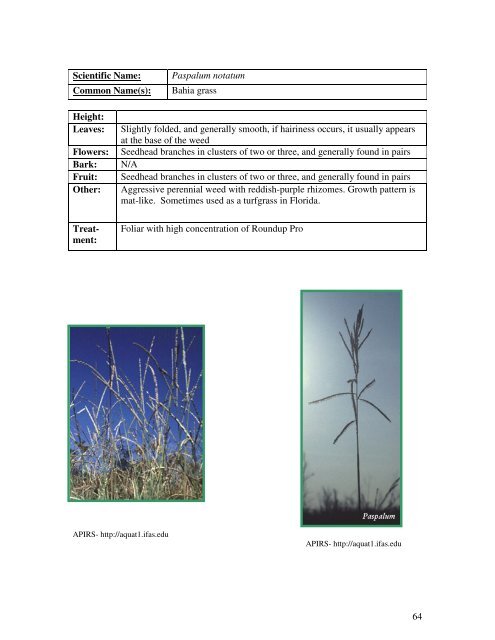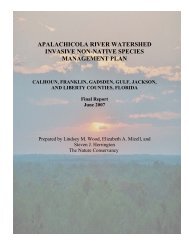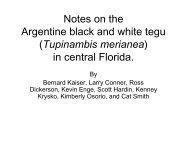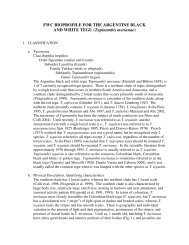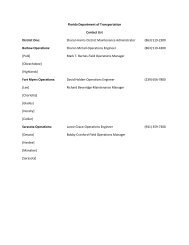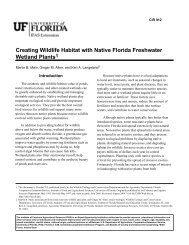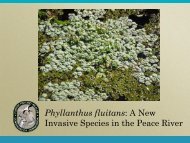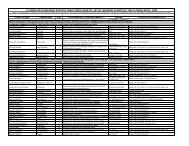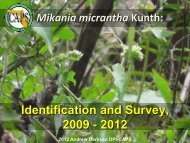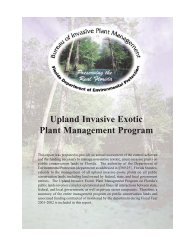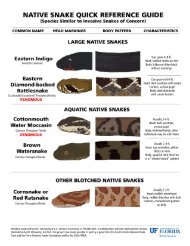Identification Guide For Invasive Exotic Plants of the Florida Keys
Identification Guide For Invasive Exotic Plants of the Florida Keys
Identification Guide For Invasive Exotic Plants of the Florida Keys
You also want an ePaper? Increase the reach of your titles
YUMPU automatically turns print PDFs into web optimized ePapers that Google loves.
Scientific Name:<br />
Common Name(s):<br />
Paspalum notatum<br />
Bahia grass<br />
Height:<br />
Leaves:<br />
Flowers:<br />
Bark:<br />
Fruit:<br />
O<strong>the</strong>r:<br />
Treatment:<br />
Slightly folded, and generally smooth, if hairiness occurs, it usually appears<br />
at <strong>the</strong> base <strong>of</strong> <strong>the</strong> weed<br />
Seedhead branches in clusters <strong>of</strong> two or three, and generally found in pairs<br />
N/A<br />
Seedhead branches in clusters <strong>of</strong> two or three, and generally found in pairs<br />
Aggressive perennial weed with reddish-purple rhizomes. Growth pattern is<br />
mat-like. Sometimes used as a turfgrass in <strong>Florida</strong>.<br />
Foliar with high concentration <strong>of</strong> Roundup Pro<br />
APIRS- http://aquat1.ifas.edu<br />
APIRS- http://aquat1.ifas.edu<br />
64


